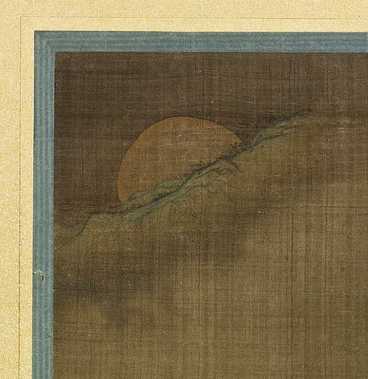
关于be动词、情态动词和实义动词的区别
新人教版英语七年级上册复习资料
到目前为止,大家主要学习了三类动词:be动词、情态动词和实义动词。下面大家分别来讲一下它们得用法。
1.be动词属于系动词,在一般现在时态的句子中主要表现为三种形式:am is、are。后面往往接
形容词或名词做表语。如:
(1)I’m strong. (strong形容词做表语)
(2)He is a boy.( a boy名词做表语)
含有be动词的句子在进行否定、疑问句变化时,都要在be动词上变化。
(1)变为否定句:主语+be+ not+其他。即,直接在be后not.
①I’m a Chinese girl.(变为否定句)
②You are right. (变为否定句)
③He is strict with me. (变为否定句)
④She is from America. (变为否定句)
以上四个句子中都含有am、is或are,变否定句时,直接在am 、is、are后面加上not.
即:
①I’m not a Chinese girl.
②You are not right.
③He is not strict with me.
④She is not from America.
(2)变为一般疑问句:Be+主语+其他?即把be动词提到主语的前面。注意:当肯定句主语为第
一人称I和We时,变一般疑问句要变为第二人称,be动词也要相应的变为are.同样肯定句中的my和our 也要变为your.
①I am a worker. (变为一般疑问句)
→Are you a worker?
②We are good friends. (变为一般疑问句)
→Are you good friends?
③She is from Japan. (变为一般疑问句)
→Is she from Japan?
④He is strict with me. (变为一般疑问句)
→Is he strict with me?
(3)变特殊疑问句:一般的要求为“对划线部分提问”,即用特殊疑问词代替划线的部分,后接省略
划线部分的一般疑问句(一般不再出现划线部分)。如:
①I’m well(not bad).(对划线部分提问)
→How are you?
②She is from America. (对划线部分提问)
→Where is she from?
2、关于情态动词:初中大家常用的情态动词主要有:can、may、must、need。大家这里主要
以can为例来说明情态动词的用法。情态动词后面必须接动词的原形。情态动词can的用法类似于be动词。不论主语为第几人称,变否定就是在can后加not.变疑问就是把can提到句子前面,它没有人称和数的变化。
(1)变否定句:主语+can +not+ 其他。
①I can spell my name.(变否定句)
→I can not(can’t)spell my name.
②He can dance. (变否定句)
→He can’t dance.
(2)变一般疑问句:Can + 主语+ 其他?即直接把can提到句首。
①I can spell my name.(变为一般疑问句)
→Can you spell your name?
②He can sing.(变为一般疑问句)
→Can he sing?
(3)变特殊疑问句:特殊疑问词+一般疑问句?
①I can spell my name. (对划线部分提问)
→What can you spell?
②He can play the piano. (对划线部分提问)
→Who can play the piano?
3、实义动词,也叫行为动词。就大家现在所学的内容来讲,实义动词所在的句子中一般不存在
be动词。也就是在含有实义动词的句子变否定句或疑问句时,一定不能用be动词。那么,实义动词究竟怎样用呢?正如be动词随着主语的变化可变为am、is、are一样,在一般现在时态的句子中,实义动词在肯定句中,也要随着主语的变化而变化。当主语为第三人称单数he,she, it 时,实义动词要变为相应的第三称单数;当主语为非第三人称单数I, you(你), we,you(你们) they 时,实义动词要用动词的原形。而在变否定句和疑问句时,不能直接在动词上变,而是要借助另一类动词:助动词do、does。
(1)肯定句:
①I have a blue pen.
②He has a brother.
③ She wants to be an actor.
④ They like to play football.
(2)否定句:主语+don’t/doesn’t+动词原形。其中do/does为助动词,是来帮助实义动词构成
否定或疑问句的,但加了do/does后,其后面的动词必须用动词原形。
①I have a blue book.(变为否定句)
→I don’t have a blue book.
②He has a brother. (变为否定句)
→He doesn’t have
③She wants to be a teacher.(变为否定句)
→She doesn’t want to be a teacher.
④They like to play basketball.(变为否定句)
→They don’t like to play basketball.
(3)一般疑问句:Do/Does +主语+动词原形+其他?句中加了do/does后,其后面的动词还是
必须用动词原形。
①I have a blue backpack.(变为一般疑问句)
→Do you have a blue backpack?
②He has a sister. (变为一般疑问句)
→Does he have a sister?
③My brother does his homework before supper. (变为一般疑问句)
→Does your brother do his homework before supper?
④She wants to be a teacher. (变为一般疑问句)
→Does she want to be a teacher?
⑤They like to play basketball. (变为一般疑问句)
→Do they like to play basketball?
(4)特殊疑问句:特殊疑问词+一般疑问句?
① Your sister likes English best because it’s interesting. (对划线部分提问)
→Why does your sister like English best?
② He does his homework before supper. (对划线部分提问)
→When does he do his homework?
注意:当含有and引导的短语在句中做谓语或宾语,大家把这类句子变否定句时,必须把and变为or.如:
(1)He can swim and dance. (变为否定句)
→He can’t swim or dance.
(2)My father likes English and math. (变为否定句)
→My father doesn’t like English or math.